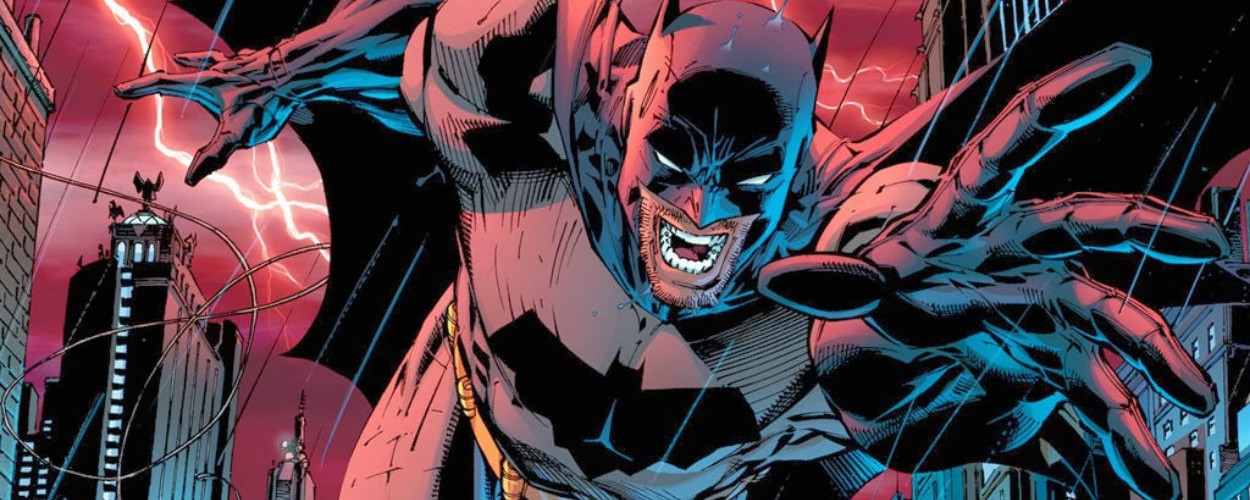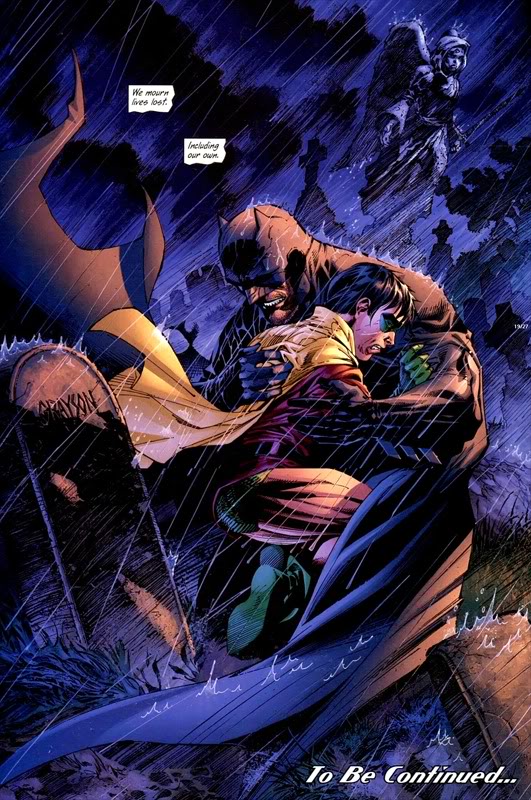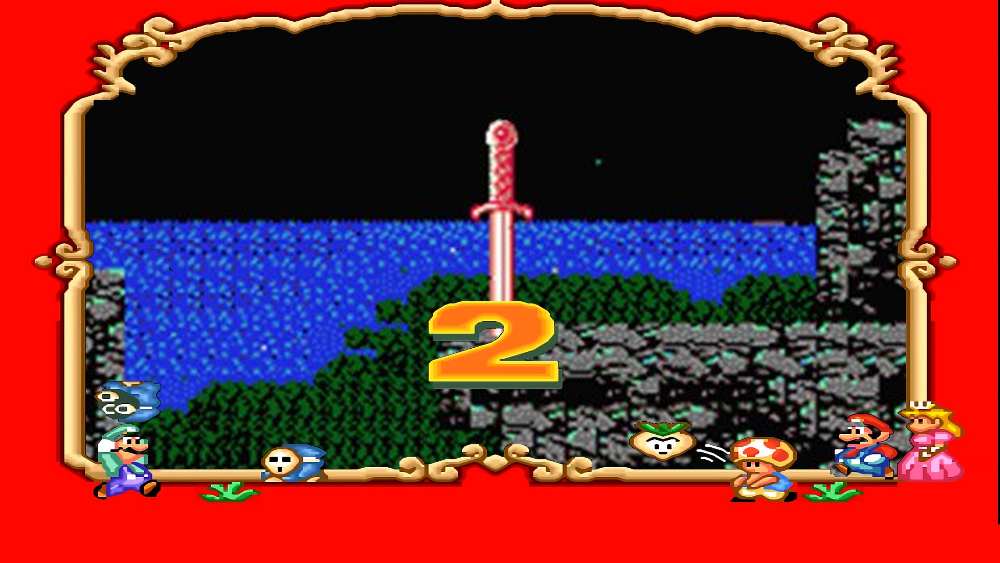Sometimes you go into something and assume it’s supposed to be some flavor of spectacular terrible. It was actually this assumption that was part of my initial bargaining salvo, “Oh come on,” I told the seller at Comic-Con, “It’s All Star Batman, it’s shit. You should be paying me to take it from you.” Then, smug look all plastered across my face, I got my discount, because the seller seemed to agree. When I finally cracked the thing though, what I discovered is that, actually, All Star was decent, actually, strike that – I thought it was quite good. Not as a superhero story, but as a character study. All Star Batman dared to explore an aspect of the Dark Knight that had simply not been explored in that way before, asking the question, “What kind of person, would Batman actually be?” and more importantly, “How does he change?” The answers, as it turns out, make for an essential read.
We Can Be Heroes
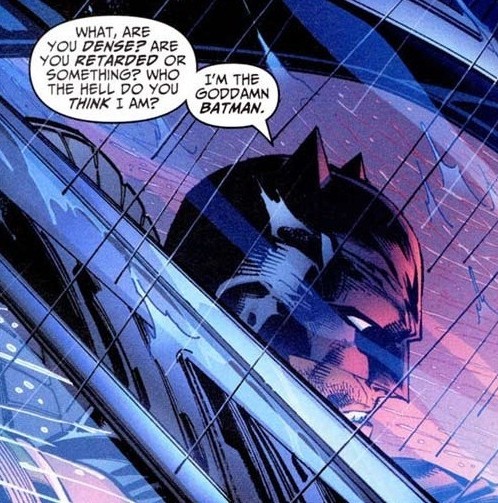 “Who the hell do you think I am? I’m the goddamn Batman!”
“Who the hell do you think I am? I’m the goddamn Batman!”
I think was the line that did it for most people. The one that made them quietly close their copy of All-Star Batman and Robin, the Boy Wonder, purse their lips and think, “You’re not my Batman.” But I think that’s missing something important, yes, this is Batman, but at a time before Bruce Wayne knew what that really meant. On a basic level, the character of Wayne is fundamentally and irreparably damaged. Any take on the character that doesn’t fundamentally acknowledge that fact is a version that is incomplete. All Star Batman takes this damage and makes it the central aspect of the character. In fact you could argue (and we will) that Frank Miller’s widely derided take on the character is the goddamn Batman.
The first thing we need to do before I can show how that works, and that All Star Batman is really good, is to put superheroes in context. Once we have that we can get past the gut reaction of, “Nope. Do not like,” and think about these things from a less emotional perspective. In the modern era, superheroes fill the same role as myths once did. They provide larger than life stories with impossible characters that fight against impossible odds. They usually have some aspect of their character that is flawed, and a set of villains that are designed to simultaneously allow the hero to use their unique skills while also preying on their weakness.
Another way that superheroes are modern myths, is that they allow a writer to deal with specific parts of a character, based on the story that they want to tell. A classic example is King Arthur. The original Welsh versions of the tale feature Arthur in a way that look very similar to anybody that’s ever read a saga. In those tales he battles Dragons, mythical creatures, and the dreaded Saxons. When the stories spread to greater England, he created a powerful kingdom and focused less on dragons and more on the Scots and conquering Ireland, because of course that’s what an English writer would want him to be doing. French writers go even further afield, creating Sir Lancelot – someone whose physical prowess on the battlefield is second only to his ability to seduce Arthur’s queen. They even make Lancelot French. So the question then becomes, which of those incarnations is the real Arthur? See? When you’re not talking about comics the answer is easy – they are all part of the real Arthurian Legend.
Which is a long way of getting back to Batman. Starting way back in 1939 with Detective Comics the he core trio of dead parents, detective, and bat motif were all there. In subsequent years the rogues gallery slowly and surely built up around it. But there is a lot of weird stuff that is part of the Bat-Mythos as well. The BatCopter springs to mind, and let’s not forget Ace the Bat-Hound, or Bat-Milk. Setting aside that it’s possible to milk a bat (seriously), these are all valid parts of the overall legend of Batman, and like Arthur every single one of them is true. The question a writer gets to ask then is what facet to work with. When it comes to myths, the character is simply too big, and often at odds with itself.
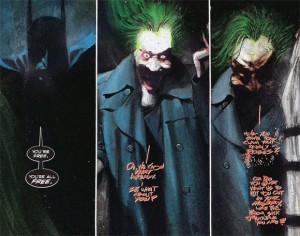 Writers can choose to focus on different facets of a character based on the story that they want to tell. A Batman based example is Arkham Asylum by Grant Morrison. That book tells the story of Batman being forced into Arkham Asylum when the Joker threatens to kill the staff. Once inside the book focuses almost exclusively on the villains and how each of them is mad in their own way. It also forces the reader to consider whether or not Batman himself ought to be within the confines of Arkham, and how his very presence is a detriment to those around him. Morrison is able to consider what sort of person would dress up like a bat to fight crime, and the answer he arrives at was, “an insane one.”
Writers can choose to focus on different facets of a character based on the story that they want to tell. A Batman based example is Arkham Asylum by Grant Morrison. That book tells the story of Batman being forced into Arkham Asylum when the Joker threatens to kill the staff. Once inside the book focuses almost exclusively on the villains and how each of them is mad in their own way. It also forces the reader to consider whether or not Batman himself ought to be within the confines of Arkham, and how his very presence is a detriment to those around him. Morrison is able to consider what sort of person would dress up like a bat to fight crime, and the answer he arrives at was, “an insane one.”
Again, this is all one part of the Batman. Other incarnations may or may not focus on them in the same way as Morrison did, but that doesn’t make them less true in the grand myth of Bruce Wayne. The legend is able to hold all of these, and so when people read All Star Batman and say, “That’s not my Batman,” they’re wrong. Bruce can both be the father figure that they want, as well as the violent misanthrope that Frank Miller thinks he is. That he can be both at the same time is something that I think makes he so interesting.
Damage Control
Which gets us around to what Miller actually is doing with the character in All Star Batman. This version of Batman is the same as the one featured in the already gritty Dark Knight Universe. Miller’s Batman dealt with the same sort of trauma as other incarnations of the character, but instead his gains strength from rage. The Batman at the beginning of All Star is torn between overwhelming anger, and the feeling of power he has over his enemies.
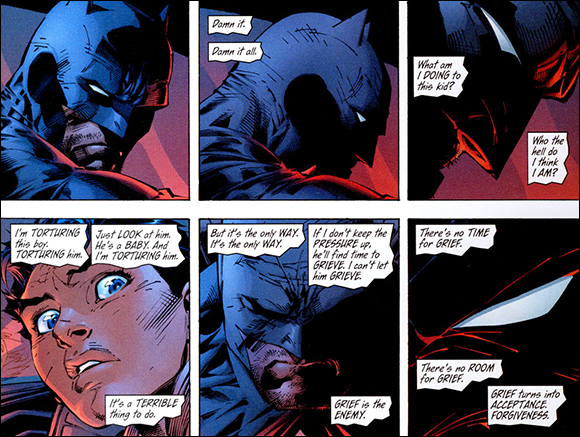 Much like Arkham Asylum did, Miller is playing in the headspace of Wayne, only his is a more grounded take. IE – a billionaire with that many psyche issues would be an insane sociopath with no concept of boundaries. So of course he treats Robin poorly upon first meeting him, and says he can eat “Rats.” The Bruce Wayne of the early All Star books is mentally unhinged, and we learn that his rage comes from the fact that he has never properly felt the loss of his parents. Worse, when something similar happens to Dick Grayson, he feels that his reaction is the best one. So his first step in training Robin is to never let him feel the loss of his parents, instead replacing it with anger. He says, “Who the hell do I think I am? I’m torturing the boy. Torturing him. Just look at him…It a terrible thing to do. If I don’t keep the pressure up, he’ll find time to grieve.I can’t let him grieve. Grief is the enemy…Grief leads to acceptance, forgiveness.”
Much like Arkham Asylum did, Miller is playing in the headspace of Wayne, only his is a more grounded take. IE – a billionaire with that many psyche issues would be an insane sociopath with no concept of boundaries. So of course he treats Robin poorly upon first meeting him, and says he can eat “Rats.” The Bruce Wayne of the early All Star books is mentally unhinged, and we learn that his rage comes from the fact that he has never properly felt the loss of his parents. Worse, when something similar happens to Dick Grayson, he feels that his reaction is the best one. So his first step in training Robin is to never let him feel the loss of his parents, instead replacing it with anger. He says, “Who the hell do I think I am? I’m torturing the boy. Torturing him. Just look at him…It a terrible thing to do. If I don’t keep the pressure up, he’ll find time to grieve.I can’t let him grieve. Grief is the enemy…Grief leads to acceptance, forgiveness.”
Through that lens we see Batman for what he really is – somebody that is running from his problems. His parents are dead, and everything that he’s done up until that point has either been to engage in his war on crime, or to bury his feelings. Case in point, there was a lot of flak given to All Star Batman since it shows Bruce and the Black Canary engaging in a little kiss and tickle, and Bats thinks, “I haven’t kissed a smoker in weeks.” So while there’s a big cry of, “not my Batman,” getting weird with an anonymous blonde is exactly the sort of soothing mechanism a billionaire would engage in. If you can’t ever properly grieve your parents, you look for any outlet for that aggression, and sometimes that outlet is wearing fishnets.
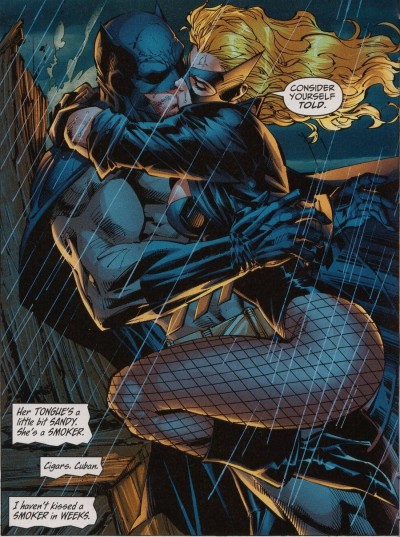
This all comes to a head when during an encounter with Green Lantern, Robin goes too far and almost kills Hal Jordan. Batman is able to save the Lantern’s life, but he realizes that it’s not enough to have the abilities he has, and it’s not enough to have a crusade to wage. In the end, we discover that Robin is basically Wayne’s conscience. It’s the part that gives him his humanity and keeps him on the right side of the line, and Batman recognizes this. That is the fundamental story at the heart of All Star Batman and Robin, the Boy Wonder. It’s the story of how, if only for a little while, Batman learned how not to be a sociopath. When I read that I really managed to put in perspective on the entire Robin relationship. Robin is the force that makes Batman what he is, and keeps him from just being a madman with a theme.
Knightfall
I’ve always felt that there was a deep tragedy to Frank Miller’s Batman. It stems from the fact that he fundamentally feels that the very things that make him “weak” are what’s preventing him from winning his war on crime. All Star Batman acts are a prequel of sorts to the The Dark Knight Returns and The Dark Knight Strikes Again. In The Dark Knight Returns, we discover that Batman has been retired since the death of Jason Todd (another Robin for those of you playing along at home). We also discover that Robin was fired for “cowardice.” Basically, we can infer that the death of Robin led Batman to reconsider the very methods he began to develop in All Star – the ones that keep him from being a rampaging sociopath.
In this context, it’s not that Dick Grayson was afraid to do something that caused him to be fired, but rather, that Robin as the metaphor for Batman’s conscience was unable to do something. According to Frank Miller if Batman is ever going to “win” his war against crime he needs to be willing to give up the last vestiges of the things that make him human and keep him sane. I feel that the tragedy is that for Frank Miller’s Batman, he becomes a monster in his effort to beat other monsters and Gotham suffers for that decision.
The overall arc of Batman is one of constant loss in the world of Frank Miller. Through the actions of his villains or Wayne’s own self destruction, he slowly loses everything. Case in point, in The Dark Knight Returns it is revealed that Wayne paid to fix the facial scarring of Harvey Dent. The hope was that by making this change Wayne could fix his former friend. In fact the opposite happened, and the surgery erased whatever was left of him, leaving only the monster. In the follow up The Dark Knight Strikes Again, he loses the original Robin (the one featured in All Star). Slowly but surely, Batman loses everything and all of it stems from his uncompromising worldview. In All Star and the Dark Knight books, Batman isn’t a hero willing to stand up for what he believes in, but a tragedy happening in slow motion – unable to change course.
Which gets us back to the beginning again. All Star Batman is not a perfect book, not by any means. But the way that it casts the Batman legend as that of a deeply troubled person who wants to do anything, really speaks to me. By making the core of the character that flawed and that volatile made me realize just how fragile the whole enterprise is. For that alone, All Star Batman and Robin, The Boy Wonder are worth picking up. If you’re clever, you might even be able to snag a discount.

